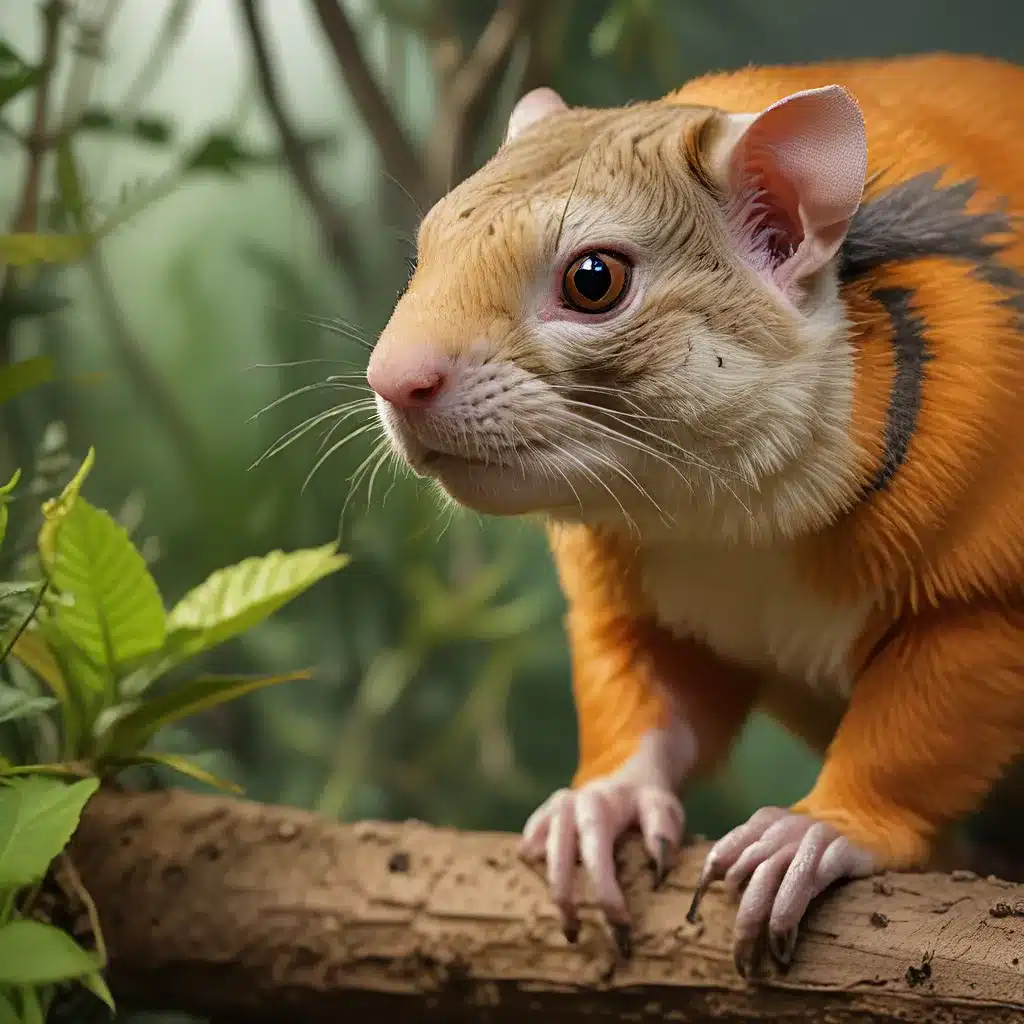
Ah, the world of exotic pets – where the boundaries of conventional pet ownership are pushed, and the unique quirks of our scaly, feathered, or furry friends become the focal point. As an avid exotic pet enthusiast, I’ve learned that providing the right environment for our unconventional companions is key to their health, happiness, and overall well-being. That’s why today, we’re diving deep into the realm of exotic pet behavior and habitat design – uncovering the secrets to creating truly enriching environments that cater to their every need.
The Importance of Enrichment
Let’s start by addressing the elephant in the room – or should I say, the bearded dragon in the terrarium? Enrichment has become quite the buzzword in the exotic pet community, but do we truly understand its significance? Well, my friend, enrichment is all about providing our beloved pets with the means to engage in their natural behaviors and make choices within their habitat. It’s not just about throwing in a few fancy decorations and calling it a day.
As the experts at Wild Welfare explain, enrichment is all about “creating choices for animals so they feel more in control of their environment.” It’s about understanding the unique needs and motivations of each species, and then designing an environment that allows them to thrive. After all, a happy and healthy exotic pet is one that can freely express its natural behaviors, from burrowing and climbing to foraging and exploring.
Bioactive vs. Traditional Enclosures
Now, you may have heard the term “bioactive” thrown around in the exotic pet world. While bioactive enclosures can certainly provide a high level of enrichment, they’re not the be-all and end-all of habitat design. As the experts at Sunfish Exotics explain, it’s entirely possible to create an enriching environment for your pet without going the bioactive route.
The key is to focus on providing the right elements, regardless of whether your enclosure is bioactive or more traditional. For example, a well-designed, non-bioactive enclosure can still include a variety of natural branches, substrates, and hiding spots that cater to your pet’s innate behaviors. The goal is to create an environment that allows your exotic pet to feel secure, comfortable, and able to engage in their natural behaviors.
Designing for Behavior and Habitat
Now, let’s dive into the nitty-gritty of habitat design. When it comes to creating an enriching environment for your exotic pet, there are a few key factors to consider:
Behavioral Needs
Every exotic pet has unique behavioral needs and motivations that must be taken into account. For example, a bearded dragon may thrive in an enclosure with multiple basking spots and climbing platforms, allowing it to thermoregulate and engage in its natural climbing behaviors. On the other hand, a ball python may prefer a cozy, hide-filled habitat that caters to its natural burrowing and hiding instincts.
As Lukas Kostka, a habitat design expert, explains, the goal is to “develop ideas that will provide a species-appropriate stimulating environment that promotes positive behaviors.” By understanding the unique needs of your exotic pet, you can create an enclosure that allows them to thrive.
Substrate and Decor
The substrate and decor you choose for your exotic pet’s habitat can have a significant impact on their well-being. From natural substrates like eco earth or coconut fiber to a variety of branches, rocks, and hiding spots, the right elements can provide sensory stimulation and opportunities for natural behaviors.
Lighting and Heating
Proper lighting and heating are crucial for the health and well-being of exotic pets. Not only do these elements impact their thermoregulation, but they can also influence their behavioral patterns and overall activity levels. Incorporating the right lighting and heating sources can create a habitat that feels like home for your scaly, feathered, or furry friend.
Enrichment Activities
Remember, enrichment isn’t just about the physical environment – it’s also about providing your exotic pet with opportunities to engage in meaningful activities. This could include things like puzzle feeders, scent trails, or even simple yet engaging objects that encourage exploration and play.
As Lukas Kostka suggests, the key is to focus on “goal-oriented behaviors” that are “usually rewarding and positive” for your pet. By incorporating these types of enrichment activities, you can help your exotic pet stay mentally and physically stimulated.
The Balancing Act
Now, I know what you’re thinking – with all these factors to consider, designing the perfect habitat for an exotic pet can feel like a daunting task. But fear not, my friend! It’s all about finding the right balance.
At Golden Exotic Pets, we believe that the key to creating an enriching environment is to focus on the core needs of your pet, rather than getting caught up in the latest trends or fancy gadgets. It’s not about having the largest enclosure or the most elaborate bioactive setup – it’s about understanding your pet’s unique requirements and then tailoring their habitat accordingly.
Putting It All Together
So, let’s take a step back and consider the bigger picture. Exotic pet behavior and habitat design are all about striking the right balance between meeting your pet’s innate needs and providing an environment that allows them to thrive.
Whether you’re a seasoned exotic pet owner or just starting out, remember that enrichment is not a one-size-fits-all solution. It’s a continuous process of learning, experimenting, and fine-tuning your approach to create the perfect habitat for your beloved companion.
By understanding the importance of enrichment, exploring the differences between bioactive and traditional enclosures, and designing for your pet’s specific behavioral and habitat needs, you’ll be well on your way to creating an environment that truly brings out the best in your exotic pet. So, let’s get started on this exciting journey and unlock the full potential of our unconventional companions!

